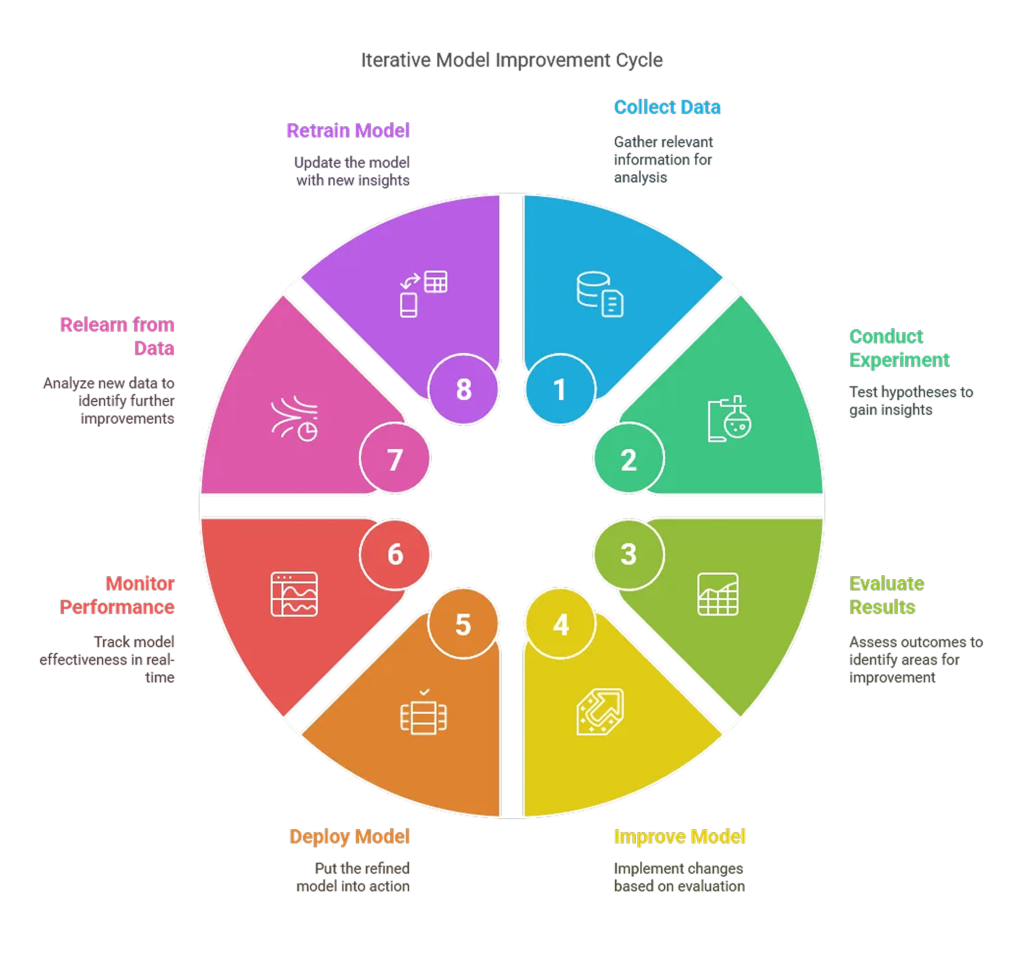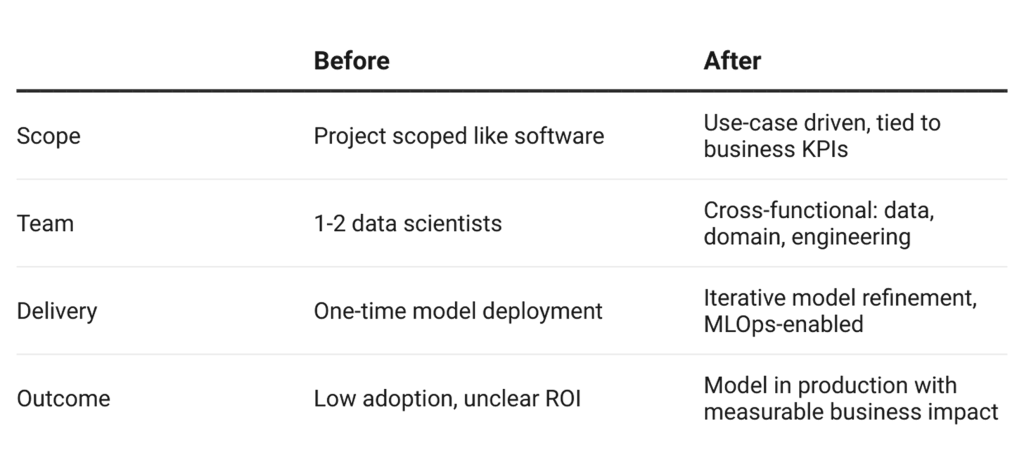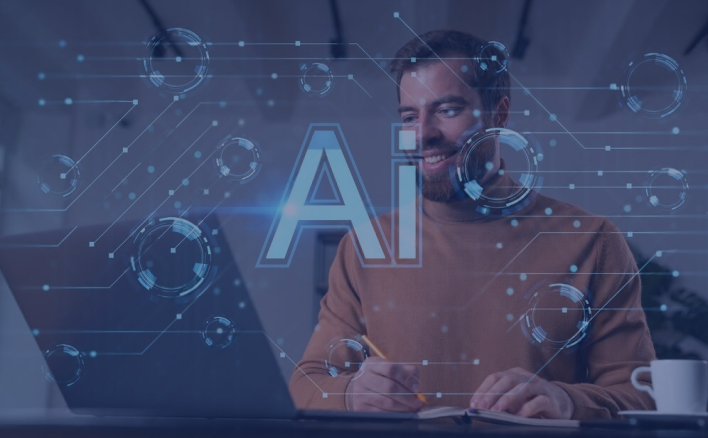
How its different from Traditional Software Delivery
AI has evolved from a futuristic concept to an essential capability for competitive organizations. Yet, many businesses struggle to realize real value from their AI initiatives. Why? Because they approach AI delivery with outdated mindsets and methods. To succeed, we must rethink how we build and deliver AI — shifting not just our tools, but our thinking.
The AI Delivery Problem
Organizations often treat AI like traditional software development — clearly defined requirements, deterministic outcomes, and rigid delivery timelines. But AI is fundamentally different. Models learn from data, behave probabilistically, and require ongoing experimentation. Applying old methods leads to cost overruns, underwhelming performance, and abandoned projects.
Mindset Shifts Needed
From Deterministic to Probabilistic Thinking
Unlike traditional software systems that deliver predictable, rule-based outputs, AI models generate results based on learned patterns in data — and those results are inherently probabilistic. For CTOs and CIOs, this means embracing uncertainty as a core characteristic of AI. Rather than expecting binary correctness, AI systems need to be evaluated in terms of confidence scores, tolerances, and statistical thresholds. These systems must gracefully handle edge cases and continuously adapt to changes in the data landscape. Designing for these realities upfront is crucial to avoid surprises in production.
From Software Engineering to Scientific Thinking
AI development is less like coding and more like conducting research. It starts with hypotheses — about the data, the features, and the expected behavior of the model — and involves experimentation, evaluation, and refinement. Leadership must encourage teams to adopt a scientific mindset: test, fail, learn, and improve. Metrics such as accuracy, precision, recall, and F1-score must not only be understood but contextualized within the business objective. Importantly, failure isn’t an exception — it’s part of the process. The key is fast feedback and learning cycles that help refine models and strategies.

From Control to Collaboration
AI solution delivery requires orchestrated collaboration across diverse functions — data scientists, domain experts, ML engineers, IT ops, and business leaders. When these groups operate in silos, communication gaps and misaligned expectations undermine progress. Successful AI initiatives are led by agile, multidisciplinary teams where roles are clear, goals are shared, and feedback loops are tight. For tech leaders, fostering a collaborative culture is just as critical as the choice of technology stack or algorithm.
Method Shifts Needed
From Agile to Iterative AI Loops
Agile is a good start, but AI demands even more flexibility. Iteration in AI is not just about sprints — it’s about repeated cycles of data preparation, experimentation, tuning, and evaluation. Each cycle yields learning, not always results. Teams must be willing to timebox experiments, test multiple approaches, and build incrementally toward better models. Importantly, the goal is not perfection but progress. A good-enough model that delivers business value today is more impactful than an elusive perfect model that never ships. The first model release is just the beginning — successful teams treat deployment as the start of a feedback-rich journey of continuous improvement.
MLOps is Not Optional
Just like DevOps transformed software, MLOps is essential for scalable, reliable AI. Continuous integration, testing, deployment, and most critically, continuous training are now part of the delivery pipeline.
From One-Off Models to Platform Thinking
Organizations must stop building isolated models and start building AI platforms: reusable components, shared infrastructure, and governance frameworks. This accelerates delivery, ensures consistency, and reduces cost.
Real-World Patterns: A Before/After Snapshot

Organizations looking to unlock real value from AI must evolve both mindset and method. Ask yourself:
- Are we thinking like scientists?
- Are our teams truly cross-functional?
- Is our infrastructure built for iteration and scale?
If not, now’s the time to shift. AI isn’t just a technology play — it’s a transformation in how we solve problems.
Reach out to explore how we can help modernize your AI delivery approach with proven frameworks, tools, and real-world expertise.
Written By: Anurag Setia








